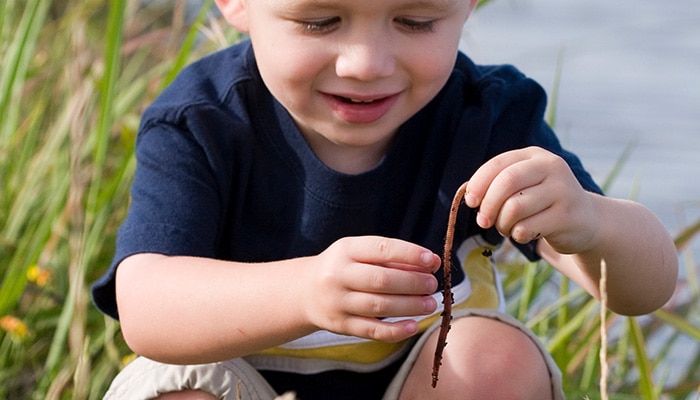While we believe that the books and resources recommended may be of value to you, keep in mind that these are suggestions only and you must do your own due diligence to determine whether the materials are appropriate and suitable for your use. PNC has no sponsorship or endorsement agreement with the authors or publishers of the materials listed.
CURIOUS CRAWLERS

Worms and Slugs
Children will compare worms and slugs with insects.

Lesson Objective
Children will compare and contrast worms and slugs, then compare them to insects.
Science
What You'll Need
- Magnifying glasses – 1 per child
- Clear containers with worms – 1 per 2 children (see Lesson Tips)
- Chart paper
- Clear containers with slugs – 1 per 2 children (see Lesson Tips)
- Paper plates – 1 per 2 children
- Marker
What To Do
Note: This lesson is best taught after the lesson, Is It an Insect?
- Divide the chart paper into two columns labeled “worms and slugs” on one side and “insects” on the other. Ask the children what they already know about insects, and write it on the chart.
- Display the containers with the worms and the slugs so the children can see them. Tell the children they will be examining these creatures to tell how they are the same and different from insects.
- Distribute magnifying glasses to the children.
- Place worms on paper plates – 1 per plate. Tell the children to use their magnifying glasses to look closely at the worms.
- Probe their thinking by asking questions about the worms (see Guiding Student Inquiry). Accept all of the children’s answers, and write or draw them on the chart paper.
- Place slugs on paper plates, and have the children use their magnifying glasses to look closely at them.
- Ask them questions about the slugs similar to the questions about worms. Accept all of the children’s answers, and write or draw them on the chart paper.
- With the children, compare what you wrote about the worms and slugs, and ask the children what is the same and different about them (see Did You Know?).
- Referring back to your chart, have the children compare the worms and slugs to insects (see Guiding Student Inquiry and Did You Know?).
Resources
Home School Resources
Home educators: use these printable lesson PDFs to teach this lesson to your home schoolers. They're available in English and Spanish.
Content Provided By
Common Core State Standards Initiative – These lessons are aligned with the Common Core State Standards ("CCSS"). The CCSS provide a consistent, clear understanding of the concepts and skills children are expected to learn and guide teachers to provide their students with opportunities to gain these important skills and foundational knowledge [1]. Visit the CCSS



